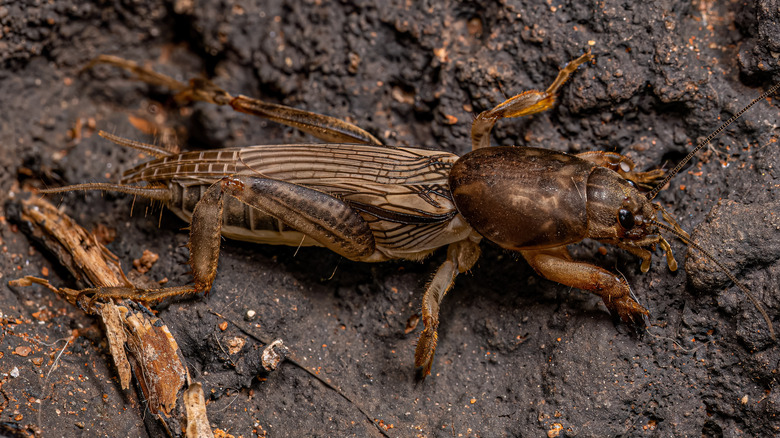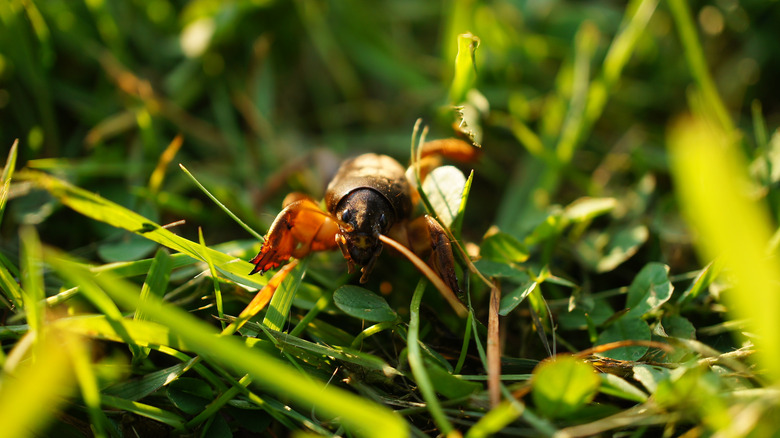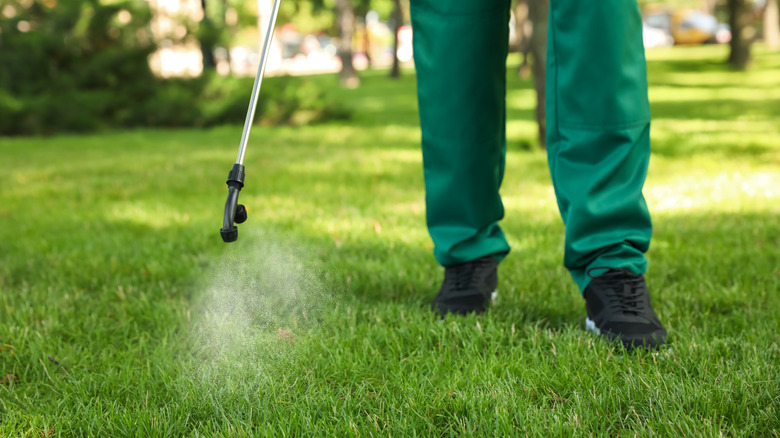How To Keep Mole Crickets Off Your Lawn
You don't need to see mole crickets in action to know they are there. Their unwanted calling cards range from patches of dead grass to small dirt mounds peppering your yard. What's worse, the visible destruction you see on your lawn's surface pales in comparison to the widespread damage the burrowing critters inflict underground, where they actively gorge on grass roots and stems. In order to keep mole crickets from wreaking havoc on your lawn you will need to apply chemical insecticide or opt for natural remedies, including non-toxic solutions and traps.
One look at a mole cricket and it's hard to believe such a minuscule insect can make mincemeat of your lawn in such a short amount of time. The average size of adult mole crickets, also known as flying moles, is a mere 1 to 2 inches long. However, what they lack in size they more than make up for in power. As their name implies, mole crickets are born to dig. Like their rodent namesake, mole crickets feature trowel-like claws on their front legs, which are adapted for sustained burrowing. In addition, their grayish-brown bodies are easily camouflaged in the soil they call home.
Natural ways to get rid of mole crickets
Before you invest resources into mole cricket removal, do a quick test to ensure the nocturnal pests are at the root of your lawn damage. Start by mixing 2 tablespoons of liquid dish soap with 2 gallons of water, then thoroughly drench the suspected area with the solution. If mole crickets are present, the soapy water will force them to the surface in a few minutes.
Homeowners wary of chemical insecticides should begin with natural remedies. Traps are your best bet if you believe your mole cricket infestation is isolated to a limited area. DIY traps can be made from mason jars. Simply line the bottom of the jars with honey or molasses, bury them in the infected soil until their tops are level with the surface of your lawn, then cover them with straw. Mole crickets — lured by the sweet-smelling bait — crawl into the trap, become immobilized by the sticky contents, and eventually die.
Another non-toxic mole cricket eradicator is neem oil. You can make a homemade insecticide by combining 3 tablespoons of cold-pressed neem oil with 2 gallons of water or purchase sprays that feature neem oil as an active ingredient. Neem kills mole crickets by destroying their outer tissue, causing extreme loss of water, leading to death by dehydration. Depending on the severity of the mole cricket infestation, you may need to repeat the neem treatment several times before observing a noticeable reduction.
Chemical mole cricket killers
Widespread mole cricket lawn damage could signal that it's time to hire professional pest control. Expert exterminators will assess your bug problem and recommend either liquid or granular pesticides. The latter keeps working for up to two months after it is applied to the infected soil, while the former is effective for up to three months.
If you prefer to terminate mole crickets on your own using chemical insecticides remember to check the ingredient list for bifenthrin, carbaryl, imidacloprid, gamma cyhalothrin, deltamethrin, and permethrin. Next, since the aforementioned active ingredients are most effective when applied to damp soil, it's critical to thoroughly soak your yard with water for several days prior to applying the chemical insecticide. Timing is also key in the application process. Aim to treat your lawn at the first signs of infestation when mole crickets are in their nymph stage. Immature mole crickets tend to tunnel closer to the surface of the soil than mature types which have the ability to burrow deeper into dirt. Once that happens it becomes easier for them to elude both chemical and natural eradication treatments.


